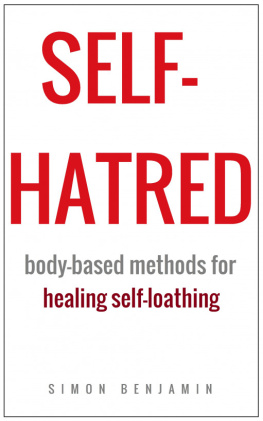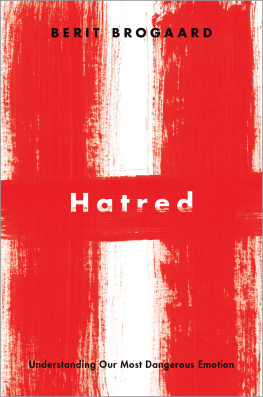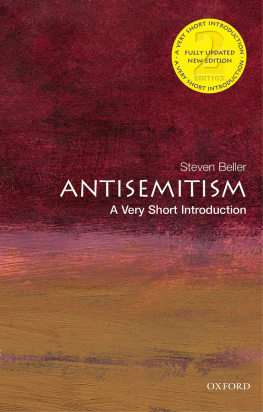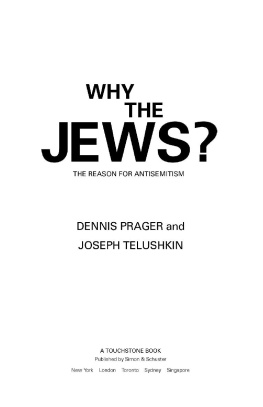A CONVENIENT HATRED:
THE HISTORY OF ANTISEMITISM
Roman soldiers after the destruction of the Second Temple in Jerusalem, 70 CE

Expulsion of Jews from Vienna, 1670

Map of Semitic invasion, Western Europe, 1870s

A CONVENIENT HATRED:
THE HISTORY OF ANTISEMITISM
Phyllis Goldstein
Foreword by
Sir Harold Evans
Facing History and Ourselves is an international educational and professional development organization whose mission is to engage students of diverse backgrounds in an examination of racism, prejudice, and antisemitism in order to promote the development of a more humane and informed citizenry. By studying the historical development of the Holocaust and other examples of genocide, students make the essential connection between history and the moral choices they confront in their own lives. For more information about Facing History and Ourselves, please visit our website at www.facinghistory.org.
Copyright 2012 by Facing History and Ourselves National Foundation. Foreword copyright 2012 by Sir Harold Evans.
Glossy insert credits: Arch of Titus, Werner Forman/TopFoto/The Image Works; antisemitic map, Albert Harlingue/Roger-Viollet/The Image Works; Vienna, Mary Evans Picture Library/The Image Works; St. Petersburg, Print Collector/HIP/The Image Works; passport, Mary Evans Picture Library/The Image Works; star, Artmedia/HIP/The Image Works; Survivors of the Holocaust, Mary Evans/Robert Hunt Collection/The Image Works; Algerian refugees, akg-images/Paul Almasy/The Image Works
ISBN: 978-0-9819543-8-7
eBook ISBN: 978-0-9837870-1-3
All rights reserved.
Printed in the United States of America.
10 9 8 7 6 5 4 3 2 1
Library of Congress Control Number: 2011935882
Printed on acid-free paper.
16 Hurd Road
Brookline, MA 02445-6919

FOREWORD
BY SIR HAROLD EVANS
I came late to an awareness of antisemitism. I grew up during wartime in a nonreligious but Protestant, working-class family in Manchester, Britain. We were a little uneasy about neighbors who were Catholic. We were barely aware of Jews. They were concentrated across town in Cheetham Hill. I played in a table tennis league for Manchester YMCA against Jewish youth clubs, but in the tensest matches I never heard the derogatory terms of yid and kike. I certainly never came across hatred of Jews from anyone in my family or the wider, evolving circle of friends and workmates. I suppose what emotional reservoirs of hate we had were exhausted by thinking about the German bombers overhead.
I first heard of antisemitism only later, when my father told me how Oswald Mosley had fomented riots in the thirties by marching his paramilitary Fascist thugs called Blackshirts through Jewish districts in Londons East End. It disgusted him. Mosleys line was that it was only big Jews he hated, not the little Jews. The big Jews were conspiring to get Britain into war with Germany, whereas the little Jews were harmless. But Mosley did nothing to stop his thugs from hurling bricks through the windows of humble houses displaying lighted Sabbath candles.
My first personal experience of what antisemitism could do was in 194647. Britain came into conflict with radical Zionists because in the exercise of its mandate it tried to limit immigration to Palestine. The Irgun hanged two British soldiers and bombed the King David Hotel. A natural patriotism inspired antisemitic riots in my native Manchester and a number of other cities.
My first encounters with the stereotype of the Jew were literarythe villainous Fagin in Oliver Twist, and then the subtler Shylock in The Merchant of Venice. Thanks to A Convenient Hatred, I have a better appreciation of why Jews so often attracted odium as usurious creditors. I learned there was not much else they were allowed to do. In much of Europe, Jews were denied ownership of land and property, denied entry to craft guilds and the like, and actually encouraged to take up money lending, which scripture prohibited for Christians.
If Shylock and Fagin imprinted a cartoon on my subconscious, it was obliterated when I plunged into reading histories of the 1930s and World War II, of Germanys descent from grotesque caricatures of Jews to genocide. I became interested in stereotypes. Reporting from the American Deep South in the 1950s for what was then the Manchester Guardian, I saw how the stereotypical cunning Jews were portrayed as responsible for black protests, i.e., for stirring up blacks to seek the rights guaranteed by the U.S. Constitution. Blacks, too, were stereotyped as ignorant by the very people who denied them fair and equal education. They were stereotyped, as subversive communists undermining freedom by those denying them the right to vote, and as lawless by the lynch mobs who went home for supper scot-free.
By the time I returned to the United Kingdom to become a newspaper editor in Britain, the new state of Israel was widely admired for making the desert flower. There is no doubt I paid too little thought to the Palestinians whod been displaced, but I certainly tried to be fair to all when I edited The Sunday Times and The Times (196782). I resolved that the newspapers must treat Israel as we would any other country, neither more harshly nor less. Israeli Prime Minister Menachem Begins government was angry with me in 1977 for publishing in The Sunday Times the critical results of a five-month investigation of the ill-treatment of Palestinian prisoners (which the State Department subsequently confirmed). The Israeli government could not have been angrier than I was at the Israeli armys facilitating role in the Christian Phalangists 1982 massacre of hundreds in the Sabra and Shatila refugee camps during the Lebanese civil war. The subsequent outcry from the people of Israel and the investigation by the Israeli government did something to redeem the reputation of the statea reputation that the Israel Defense Forces (IDF) had damaged badly by betraying the states founding ideals.
At the same time, I did not hesitate to condemn the British medias hysterical treatment of Israel when it retaliated for unprovoked rocket assaults from Jenin, the Palestinian refugee camp in the West Bank. In April 2002, the IDF sealed off the town, which the Palestinians had booby-trapped with hundreds of explosives. Since the press could not immediately get in, they listened to stories of atrocities from Palestinian Authority spokesmen. There was a frenzy of indictments of Israel. The IDF was portrayed as murdering 3,000 defenseless Palestinians and then burying the victims in secret mass graves.
My old newspaper, The Guardian, was moved to write the editorial opinion that Israels attack was every bit as repellent as Osama Bin Ladens on New York on September 11, 2001.produced a scalding review and was vindicated when both a United Nations investigation and Human Rights Watch later concluded that there had been no massacre, no secret mass graves. It was a military engagement in which the death toll was 54, of whom half were Palestinian combatants, about the same number as Israeli fatalities.
Next page












